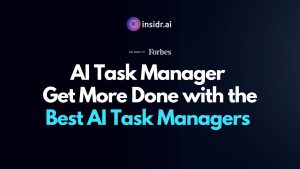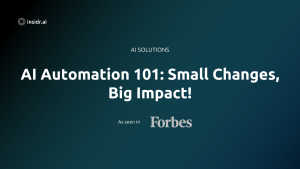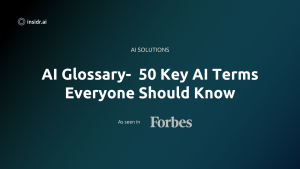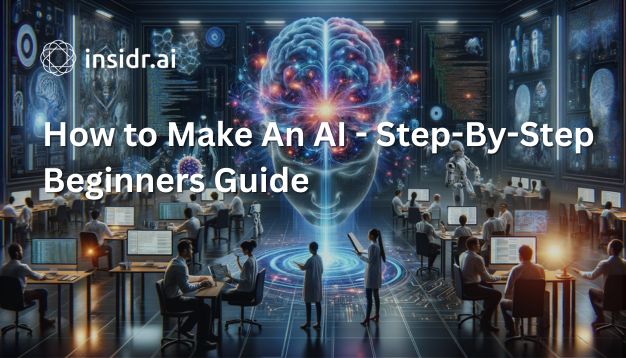
Artificial Intelligence, or AI, is like a new friend who’s really smart and helpful. It’s a kind of computer science that’s all about making machines, especially computers, do things that normally need human intelligence.
This means computers can learn, make decisions, and even understand human language! AI is not just in sci-fi movies; it’s a big part of our daily lives, from recommending what movie to watch next to helping doctors diagnose diseases.
Whether you’re a budding data scientist, a seasoned programmer, or simply an AI enthusiast, this guide offers valuable insights into how to build an AI system, highlighting its potential and the responsible practices essential for its integration into our digital landscape.
What is Artificial Intelligence?
Artificial Intelligence (AI) is a branch of computer science focused on creating machines capable of performing tasks that typically require human intelligence. This includes things like understanding human language, recognizing images, solving complex problems, and learning from experiences.
AI systems are designed to analyze data, identify patterns, make decisions, and predict outcomes, often improving their performance over time as they acquire more data. Essentially, AI enables computers and machines to mimic the problem-solving and decision-making capabilities of the human mind.
A Brief History of AI Development
AI’s story began in the mid-20th century, though its roots go back even further. The idea that machines could think like humans has been around for a long time. In the 1950s, scientists started experimenting with this idea, creating programs that could solve problems and learn. Over the years, AI has grown a lot, with big moments like when a computer first beat a human at chess!
Key AI Concepts
- Machine Learning: This is when computers learn from data to improve at doing something, without being directly programmed for that task.
- Deep Learning: A special part of machine learning, where computers use something called neural networks to learn from a lot of data. It’s like how our brains learn from experience.
- Neural Networks: These are computer systems designed to work like human brains. They help computers recognize patterns and make decisions.
Types of Artificial Intelligence

1. Narrow AI (or Weak AI)
Narrow AI is designed to perform specific tasks with expertise, often outperforming humans in those specific areas. Unlike more advanced forms of AI, it operates under a limited set of constraints and contexts.
An excellent example of Narrow AI is voice assistants like Apple’s Siri or Amazon’s Alexa, which can understand and respond to specific voice commands but can’t perform tasks beyond their programmed abilities.
Other examples include recommendation systems like Netflix’s movie suggestions or Spotify’s music playlists, which use AI to analyze your past choices and suggest new ones you might like.
2. General AI (or Strong AI)
General AI is a theoretical form of AI where machines possess the ability to understand, learn, and apply their intelligence to a wide range of problems, much like human being.
Unlike Narrow AI, General AI would have a more generalized form of intelligence and adaptability, allowing it to learn and apply its intelligence to an array of unfamiliar tasks. If developed, these AI systems could perform any intellectual task that a human can. As of now, General AI remains a concept and hasn’t been achieved yet.
A hypothetical example could be a robot that, after learning to play chess, could apply its learning skills to learn and master another unrelated task, like cooking or composing music, without additional programming.
3. Superintelligent AI
Superintelligent AI takes the concept of General AI further by not just equalling but significantly surpassing human intelligence. This type of AI would be capable of exceptional problem-solving and creative thinking, far beyond what current human brains are capable of.
It’s a concept that has been popularized in science fiction and futuristic theories and remains speculative and controversial. The development of Superintelligent AI raises both exciting possibilities and significant ethical and safety concerns, as such intelligence could rapidly outpace human control or understanding.
An example, albeit fictional, could be an AI that develops new scientific theories, creates advanced technology, or finds solutions to global issues autonomously and more efficiently than human researchers.
What Can AI Be Used For?

Artificial Intelligence (AI) has a wide range of applications, each demonstrating its capability to transform different sectors and aspects of our daily lives:
- Personal Assistants: AI powers personal assistants like Siri, Alexa, and Google Assistant. These assistants use AI to understand spoken language, respond to queries, and even anticipate needs based on user preferences and past interactions.
- Natural Language Processing (NLP): NLP, a branch of AI, enables machines to understand, interpret, and respond to human language in a meaningful way. This technology is used in translation apps, voice-to-text features, and customer service chatbots.
- Healthcare: AI in healthcare is revolutionizing patient care and research. It assists in diagnostic processes, personalizes patient care plans, and even aids in drug discovery. For example, AI algorithms can analyze complex medical data faster than human counterparts, leading to quicker and more accurate diagnoses.
- Self-Driving Cars: AI is crucial in the development of autonomous vehicles. It processes data from vehicle sensors to make split-second decisions regarding safety, route navigation, and obstacle avoidance.
- Predictive Analysis in Business: Companies use AI for predictive analysis to forecast market trends, consumer behavior, and business outcomes. This helps in making data-driven decisions, enhancing customer experiences, and optimizing operations.
- Robotics: AI-driven robotics are used in various industries for tasks like manufacturing, where they can work more precisely and consistently than humans. They’re also used in exploration missions, like NASA’s Mars rovers, which are equipped with AI to navigate and study the Martian terrain autonomously.
- Finance and Banking: AI in finance includes algorithmic trading, fraud detection, and risk management. AI systems can analyze market data to make trading decisions or spot unusual patterns indicative of fraudulent activities.
- Customer Service: AI is widely used in customer service for handling inquiries and providing support. Chatbots, powered by AI, can handle a large volume of basic customer queries efficiently, freeing human agents to tackle more complex issues.
These examples highlight just a few of the many ways AI is being used today. Its versatility and adaptability make it a valuable tool across various fields, continually opening up new possibilities and enhancing existing operations.
Planning Your AI Project
When starting an AI project, it’s like setting out on an adventure in the world of technology. You need a plan, a clear direction, and the right tools. Let’s break down the steps to make your AI journey a success.
👉 Read more: Best AI Chatbots
1. Identifying the Problem You Want to Solve with AI
Before diving into how to make AI or building AI systems, it’s crucial to pinpoint the exact problem you want your AI to solve. This step is about understanding the needs and challenges of the task at hand.
This involves problem identification – understanding what needs fixing or enhancing in your current system. For instance, if you’re in healthcare, your AI project could aim at analyzing data to predict patient outcomes more accurately.
AI can tackle a wide array of issues, from simple to complex. Here are some common problems that AI is often used to solve:
- Improving customer service through chatbots.
- Analyzing large sets of medical data for quicker diagnoses.
- Enhancing security systems with facial recognition technology.
- Streamlining supply chain management in businesses.
- Providing personalized learning experiences in education.
- Optimizing energy usage in smart homes.
- Predicting maintenance needs in manufacturing.
- Automating routine tasks in various industries.
Understanding your specific needs helps in building AI systems that are efficient and effective.
2. Collecting and Preparing Data: Importance of Quality Data
Data is the cornerstone of any AI project. The quality, relevance, and amount of data you collect will directly impact your AI’s performance. This includes gathering relevant data, which might be structured data (like numbers and categories) or unstructured data (like text or images).
Structured vs Unstructured Data
- Structured Data: This is data that is organized and easy for machines to read, like spreadsheets with clear rows and columns.
- Unstructured Data: This includes things like text, images, or videos. It’s more complex and requires more advanced processing techniques.
This is the data your AI will learn from. It should be as diverse and comprehensive as possible to cover different scenarios your AI might encounter.
Data scientists play a crucial role in data collection and preparation, which includes data cleaning (removing inaccuracies or duplications) and data augmentation (adding data to increase diversity).
The training process for your AI model depends heavily on the quality and relevance of this data. Whether it’s for deep learning algorithms in computer vision or speech recognition, the better your data, the better your AI system’s performance.
3. Choosing the Right Algorithm for Your AI
This step is about selecting the right tools and mathematical instructions to build your AI. AI models are built using various machine learning algorithms, each suited for different tasks.
- Classification Algorithms: These are used when your AI needs to categorize data into different groups. For instance, sorting emails into ‘spam’ or ‘not spam’.
- Regression Algorithms: These are great for predictions, like forecasting sales or temperatures.
- Clustering Algorithms: These help in grouping sets of data with similar characteristics, often used in market segmentation or organizing large data sets.
- Deep Learning Algorithms: These are complex algorithms used in tasks like speech recognition or computer vision. They require a lot of data and processing power but are powerful tools for handling unstructured data.
Each type of algorithm serves a different purpose. For instance, in developing AI systems for finance, you might choose predictive algorithms that analyze market trends.
Deep learning models, part of the broader family of machine learning algorithms, are particularly useful for tasks involving large amounts of unstructured data, like image and voice recognition. The right algorithm, combined with AI software and programming languages like Python or R, forms the backbone of your AI system.
Understanding these basics, along with continuous learning about emerging technologies and popular programming languages in AI, will guide you in making an AI system that’s not just functional but also innovative.
Programming the AI
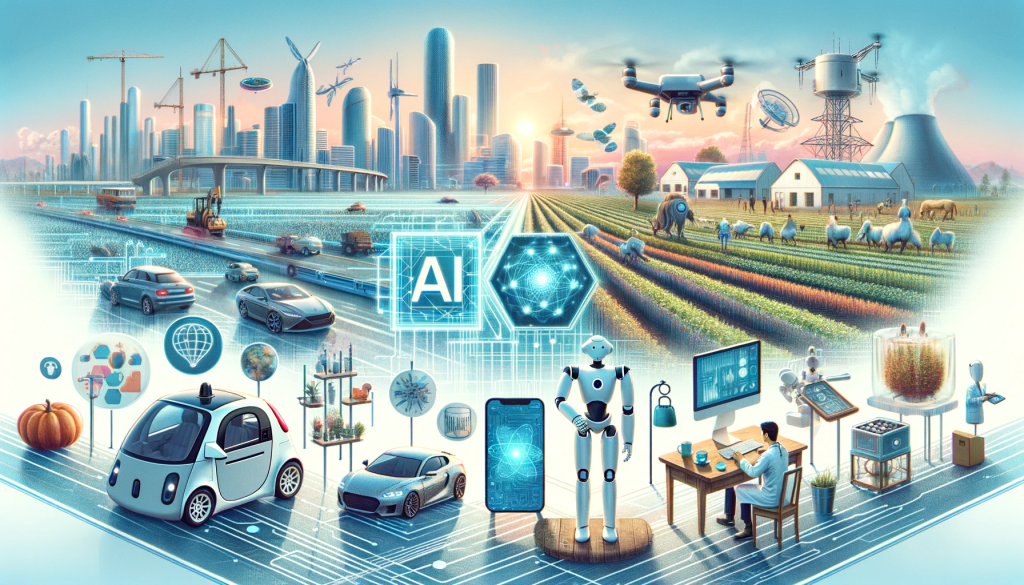
Programming an AI (Artificial Intelligence) involves several steps, from conceptualizing the algorithm to its integration into existing systems. Let’s break down this process into understandable parts.
Step-by-Step Guide to Coding Basic AI Algorithms
- Understanding the Problem: First, identify the problem you want your AI to solve. This could range from data analysis to speech recognition.
- Selecting the Right Algorithm: Choose an algorithm suitable for your task. This could be a simple decision tree for classification problems or more complex algorithms for tasks like predictive models.
- Gathering and Preparing Data: Collect high-quality data relevant to your task. Prepare this data by cleaning and organizing it to be used effectively by the AI.
- Writing the Code: Begin coding using popular programming languages like Python or Java. Utilize libraries and frameworks that offer essential tools for AI development.
- Testing the Algorithm: Run your algorithm with a subset of your data to ensure it works as intended.
Training AI Models with Datasets
The first step in training AI models involves gathering and preparing the data. This means collecting raw data relevant to the task and transforming it into a format usable for the AI, known as training data. High-quality data ensures better learning and accuracy.
After preparing the data, the next step is to train the AI model. This involves feeding the training data into the algorithm, allowing it to learn and make predictions. The model is then validated using a separate set of data to check its accuracy and effectiveness.
Debugging and Optimizing AI Code
Once your AI system is in place, it’s essential to debug and optimize the code. This involves identifying and fixing errors, improving the efficiency of the code, and ensuring that the AI operates correctly. It’s a critical step to enhance the performance and reliability of your AI solution.
Integrating the AI into Existing Systems
Integrating an AI model into existing systems requires a basic understanding of both the AI technology and the system it’s being integrated into. This process involves:
- Linking the AI to Data Sources: Connect your AI system to data sources to gather data. This can involve setting up APIs or direct database connections.
- Customizing the AI for the Task: Adjust your AI model to perform the particular task within the existing system, ensuring it can handle the specific type of data and requirements of the system.
- User Interface Adaptation: Modify the user interface of the existing system to incorporate the AI functionality, making it user-friendly and efficient.
- Testing and Deployment: Test the integrated AI thoroughly to ensure it works seamlessly with the existing system. Once tested, deploy the AI solution for operational use.
- Continuous Monitoring and Improvement: Regularly monitor the AI operation for any issues and make necessary improvements to maintain efficiency and accuracy.
Testing and Improving Your AI
After building your AI system, the next crucial steps are testing its accuracy and performance, and refining it for better results. This stage is key to ensuring your AI can solve complex problems effectively and ethically.
Testing AI Accuracy and Performance
- Performance Metrics: Use specific metrics to evaluate the accuracy, speed, and reliability of your AI. This could include precision and recall for classification tasks or mean squared error for regression models.
- Cross-Validation: Implement cross-validation techniques to assess how well your AI model generalizes to new data. This involves dividing your data into training and testing sets and evaluating the model’s performance on these sets.
- Real-World Testing: Test your AI in real-world scenarios to ensure it performs well under practical conditions. This is particularly important for systems designed to solve complex problems, as lab conditions often differ significantly from real-world environments.
Techniques for Improving and Refining AI Models
- Data Quality Enhancement: Improving the quality of your training data can significantly enhance the performance of your AI. This includes cleaning data, handling missing values, and ensuring diversity in the dataset to prevent biases.
- Using Pre-Trained Models: Leveraging pre-trained models can be a shortcut to building an effective AI, especially in domains like computer vision or natural language processing. These models, trained on vast datasets, can be fine-tuned for specific tasks.
- Hyperparameter Tuning: Adjusting the hyperparameters of your AI model can lead to substantial improvements. Tools like grid search or random search can help in systematically finding the optimal settings.
- Feature Engineering: Transforming or creating new input features can make your AI model more insightful and accurate. This is where the expertise of a data scientist becomes invaluable.
- Regular Updates and Training: Continuously updating and retraining your AI with new data helps it stay relevant and effective, especially in rapidly evolving fields.
Ethical Considerations and Avoiding Biases in AI
Bias Detection and Mitigation
Regularly test your AI for biases, especially those that might affect certain groups unfairly. Once identified, take steps to mitigate these biases, such as using more diverse datasets or altering the model.
Ethical Guidelines
Establish and follow ethical guidelines to ensure that your AI does not cause harm and operates in a manner that is fair and just. This includes considering the impact of your AI on all stakeholders.
Transparency and Accountability
Deploying AI Solutions

Guide on Integrating AI into Applications and Systems
- Preparation: Before deploying, ensure your AI is thoroughly trained and tested. This might involve unsupervised learning, where the AI identifies patterns and insights from data without specific guidance.
- Choosing the Right Environment: Decide where your AI will live. Will it be a part of a web application, a mobile app, or a standalone system?
- Integration: Carefully integrate the AI into your application or system. This involves both technical and design considerations, ensuring that the AI functions seamlessly within the broader system.
- User Interface: Pay attention to how users will interact with your AI. The user interface should be intuitive, making the AI easy and pleasant to use.
Cloud Platforms and On-Premise Deployment
- Cloud Platforms: Deploying AI on cloud platforms is popular due to its scalability and ease of access. Cloud platforms can handle large amounts of data and computing power, which is essential for AI operations. They also allow for easier updates and maintenance.
- On-Premise Deployment: This involves setting up the AI system within your own infrastructure. It offers more control over the AI and is often preferred for sensitive or highly confidential operations. However, it can be more complex and resource-intensive.
The decision between cloud and on-premise deployment depends on factors like the nature of your AI project, data security needs, and available resources.
In both cases, it’s important to continuously monitor and update your AI to ensure it remains effective and secure. Whether you’re building an AI from scratch or integrating pre-trained models, the deployment phase is critical in making your AI project a practical and valuable tool.
Remember, deploying AI is not just about the technology; it’s about how it fits into and enhances the broader system or application it’s a part of.
Advanced AI Development
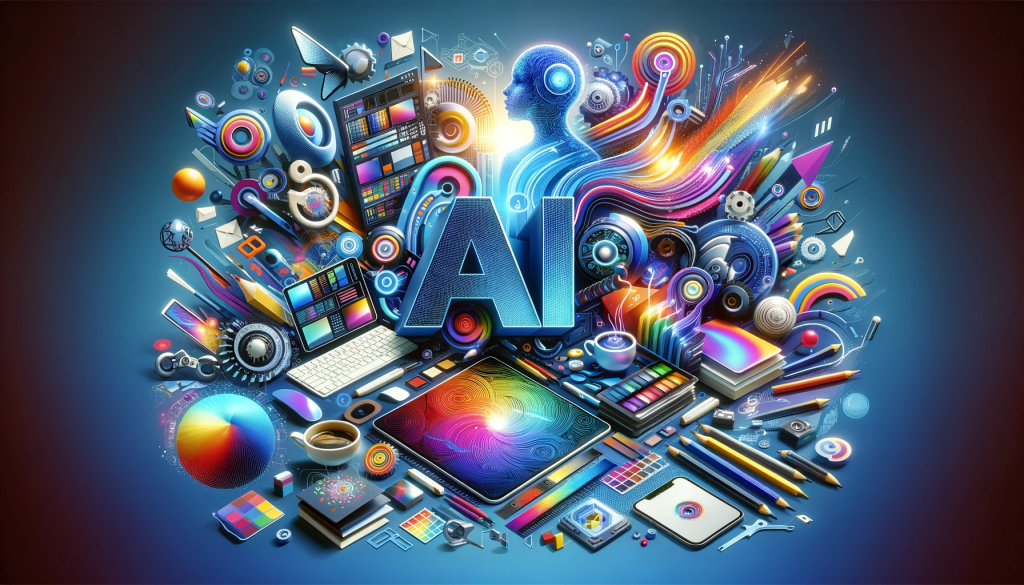
Advanced AI development delves into more complex areas, expanding the capabilities of AI systems beyond basic tasks. This involves sophisticated techniques like reinforcement learning, natural language processing (NLP), and computer vision, all of which require a robust understanding of data science and programming.
Reinforcement Learning
Reinforcement learning is a type of machine learning where an AI system learns to make decisions by performing certain actions and receiving feedback from those actions. It’s like teaching a child through rewards and consequences. This technique is crucial in building an AI system that needs to operate in uncertain or complex environments, where it learns from its own experiences.
Natural Language Processing
NLP enables AI to understand and interact using human language. This involves parsing speech or text inputs, understanding context and nuances, and responding in a way that is natural for humans. Developing an AI with NLP capabilities requires high data quality and sophisticated algorithms, often utilizing the most popular programming languages like Python or Java.
Computer Vision
Computer vision is the AI capability that enables machines to interpret and make decisions based on visual data. This technology is fundamental in projects like self-driving cars, where the AI system must accurately perceive and react to its surroundings.
Advanced AI Applications
Using a combination of reinforcement learning, computer vision, and other AI technologies, self-driving cars can navigate roads, avoid obstacles, and make real-time decisions.
Building an AI system for a self-driving car requires not only advanced programming skills but also a keen understanding of ethical considerations, as these cars must make decisions that can impact human safety.
Building an advanced AI system, whether it’s an instance of artificial narrow intelligence for a specific task or a more ambitious project towards artificial general intelligence, requires a deep understanding of both the technology and the implications of its use.
By mastering these advanced concepts and technologies, developers can create AI solutions that are not only powerful and effective but also responsible and beneficial for society.
Conclusion
We navigated the essential steps of developing AI, from pinpointing problems and preparing data to programming and deploying AI systems. AI’s potential spans across various sectors, revolutionizing how we solve complex problems and interact with technology.
As AI continues to evolve, balancing its technical advancement with ethical considerations remains crucial. This journey into AI is not just about harnessing technology; it’s about innovating responsibly to create a smarter, more efficient future.
Discover More AI Tools
Every week, we introduce new AI tools and discuss news about artificial intelligence.
To discover new AI tools and stay up to date with newest tools available, click the button.
To subscribe to the newsletter and receive updates on AI, as well as a full list of 300+ AI tools, click here.




